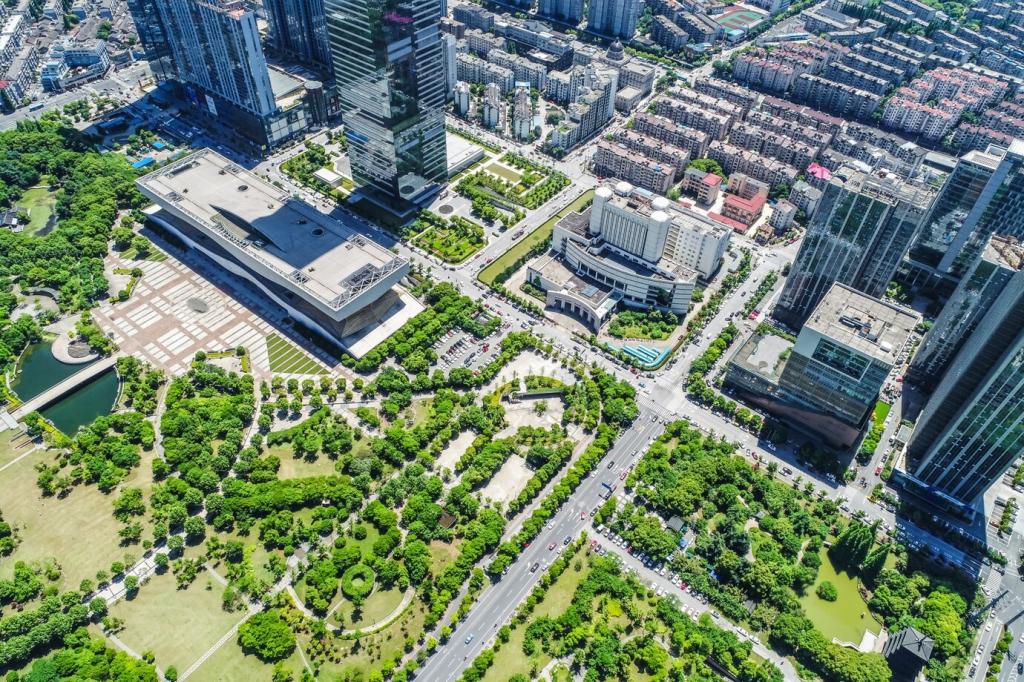Community-Driven Solutions for Urban Garden Revitalization
Community-driven solutions are at the heart of sustainable urban garden revitalization. By empowering local residents, fostering collaboration, and integrating eco-friendly practices, cities can transform underused or neglected spaces into vibrant community gardens. These gardens not only enhance urban aesthetics but also provide food security, promote environmental stewardship, and strengthen neighborhood ties. This page explores the essential components, strategies, and impacts of community-led initiatives in breathing new life into urban green spaces, ensuring these gardens thrive as integral parts of city landscapes.
Foundations of Community Engagement
Building Trust Among Residents
Establishing trust among diverse residents is essential for the success of urban garden projects. Trust forms when organizers demonstrate transparency, consistency, and respect for all community members. Open communication channels, such as town hall meetings or informal gatherings, provide opportunities for everyone to voice opinions and concerns. Trust is reinforced when promises are kept and contributions recognized, encouraging sustained involvement from both long-time residents and new arrivals. By prioritizing trust, projects can overcome historical skepticism and foster a shared sense of purpose, laying the groundwork for effective collaboration.
Identifying Community Leaders
Community leaders play a pivotal role in spearheading garden revitalization efforts. These individuals may be formal leaders, such as neighborhood association heads, or informal influencers known for their commitment and ability to mobilize others. Their deep understanding of the community’s needs and aspirations allows them to bridge gaps among different groups and facilitate meaningful dialogue. As champions of change, they motivate residents to participate, help resolve conflicts, and ensure continued progress. Recognizing and empowering these leaders is vital, as their engagement drives momentum and inspires collective action throughout the revitalization journey.
Creating Inclusive Decision-Making Spaces
An inclusive approach to decision-making ensures that all voices are represented and respected. Successful projects intentionally design forums where diverse perspectives—from elders and youth to newcomers and longtime residents—can contribute. This prevents marginalization and enables more creative and innovative solutions. Inclusive spaces foster a culture of mutual learning and respect, making the garden truly representative of the broader community. Decision-making processes should be transparent, equitable, and adaptable, ensuring everyone both feels heard and sees tangible outcomes from their participation, thus strengthening long-term commitment to the project.
Evaluating Physical Conditions
A thorough evaluation of any prospective or existing urban garden site starts with its physical characteristics—soil quality, sun exposure, water access, and existing vegetation. Understanding these factors helps determine what can be successfully grown, necessary remediation steps, and potential constraints. Additionally, an assessment should include an inventory of available resources such as fencing, storage, and pathways. Identifying challenges early, from soil contamination to invasive species, allows the community to develop targeted strategies. This foundational step lays the groundwork for a productive and sustainable garden that supports diverse plant life and meets local needs.
Understanding Community Needs
Assessing the needs and aspirations of community members is vital to ensure the garden serves its intended purpose. This involves conducting surveys, interviews, or workshops to gather input on what crops are preferred, which activities residents would like to see, and how the space can reflect cultural preferences. Community needs may range from fresh produce and medicinal plants to recreational and educational spaces. By aligning the garden’s offerings with these desires, revitalization becomes more relevant and meaningful. Persistent engagement and regular feedback loops ensure the evolving needs of the neighborhood are continuously met, keeping the garden vibrant and well-utilized.
Considering Environmental Impact
Urban gardens have both potential benefits and challenges related to local ecology. Considering environmental impact means understanding how the garden affects air quality, biodiversity, stormwater management, and the urban heat island effect. Sustainable practices, such as composting, mulching, and pollinator-friendly plantings, can enhance positive environmental outcomes. Conversely, unplanned interventions may inadvertently harm local flora and fauna. Careful planning and collaboration with environmental experts help ensure the revitalized garden enhances the ecosystem, mitigates harm, and serves not just humans but the local environment as a whole.
Collaborative Design and Planning
Participatory Design Workshops
Bringing community members together in hands-on design workshops fosters creativity and ownership. During these interactive sessions, residents brainstorm garden layouts, identify favorite plants, and suggest features like seating areas or play spaces. Participatory design ensures that the final plan is not imposed from the outside but emerges from genuine local input. Facilitators guide discussions, translating ideas into actionable designs while addressing any feasibility issues. The process also strengthens connections among residents, building shared memories that increase investment in the garden’s future and guarantee its long-term utility and appeal.
Integrating Cultural Heritage
A revitalized garden should reflect and celebrate the cultural diversity of its community. Incorporating elements such as traditional plants, art installations, or gathering spaces for cultural events honors the neighborhood’s heritage. This integration fosters a sense of belonging and pride among residents, making the garden a cherished communal asset. Through dialogue and research, design teams can uncover significant traditions and find ways to embed them into the layout and function of the garden. Cultural narratives help weave a rich tapestry unique to the community, transforming the garden into more than just a green space—it becomes a living repository of local identity.
Addressing Accessibility and Safety
Ensuring accessibility and safety is paramount in any urban garden revitalization effort. Gardens must be navigable for people of all ages and abilities, with wide paths, ramps, and adequate seating. Lighting, clear signage, and regular maintenance increase comfort and security for all visitors. Community crime prevention strategies, such as neighborhood patrols or plantings that maintain sightlines, foster a feeling of safety. By proactively considering these elements from the planning stage, organizers create welcoming environments where everyone—regardless of age, background, or ability—can participate and feel secure.

Previous slide
Next slide
Sustainable Practices and Environmental Stewardship
Organic Gardening Techniques
Implementing organic gardening techniques eliminates the use of synthetic chemicals, promoting healthier plants and safer food. Strategies include composting for natural fertilizers, companion planting to deter pests, and crop rotation to enrich the soil. Community training can dispel myths about organic methods and inspire residents to experiment with new approaches. Organic gardening enhances the quality of produce and protects local wildlife by maintaining a safe habitat. By championing these practices, urban gardens minimize harm to the environment and demonstrate a model of responsible, eco-friendly urban living for future generations.
Water Conservation Methods
Urban gardens often face water access challenges, making conservation vital. Techniques such as rainwater harvesting, drip irrigation, and mulching help retain soil moisture and reduce dependence on municipal supplies. Educational workshops can introduce these innovations and encourage widespread adoption. Efficient water use not only lowers costs but also safeguards local water resources, which is increasingly important in climates prone to drought or heavy rainfall events. By prioritizing conservation, gardens increase their resilience, decrease their ecological footprint, and set positive examples for the broader community on sustainable urban practices.
Pollinator Support Initiatives
Pollinators like bees, butterflies, and birds are essential for garden health and biodiversity. Introducing pollinator-friendly plants, avoiding pesticides, and creating habitats such as bee hotels and flowering meadows support these vital species. Community outreach can raise awareness of pollinators’ importance and combat fears or misconceptions. Pollinator-centered initiatives help boost harvests, contribute to urban food systems, and maintain the vibrancy of plant life within city environments. Supporting pollinators exemplifies a garden’s holistic approach: caring for the entire ecosystem, not just the human stakeholders.

Addressing Vandalism and Theft
Incidents of vandalism or theft can demoralize community members and threaten the viability of urban gardens. Proactive measures, such as establishing neighborhood watch programs, fostering relationships with local law enforcement, and involving at-risk youth, can reduce occurrences. Transparent communication about incidents builds trust and ensures collective action. Creative responses—like art projects or community events—transform the garden into a space of positivity and pride. When challenges arise, viewing them as teachable moments and involving the broader community in problem-solving builds unity, strengthens protective bonds, and allows the garden to recover and thrive.

Navigating Bureaucratic Barriers
Securing permissions, funds, and ongoing support often involves maneuvering through complex bureaucratic systems. Building partnerships with city agencies and advocacy organizations can simplify this process, while educating residents on policy and zoning requirements empowers them to participate in decision-making. Persistent advocacy and collective voice can lead to beneficial policy changes. When faced with setbacks like delayed permits or funding gaps, organizers benefit from strategic patience and adaptability. By developing advocacy and negotiation skills, communities become more capable of managing bureaucratic hurdles and securing the resources needed for long-term sustainability.

Responding to Environmental Stressors
Urban gardens face environmental stressors ranging from climate change and pollution to invasive species. Adaptive strategies, such as selecting resilient plant varieties, using shade structures, and implementing integrated pest management, enhance garden durability. Community monitoring and rapid response systems ensure emerging threats are addressed swiftly. Education on climate adaptation builds awareness of changing environmental conditions. Preparing for the unexpected—and learning from each event—fosters a resilient culture that stands firm in the face of adversity, securing the ongoing success and adaptability of the garden.
Collecting Data and Feedback
Continuous assessment through surveys, harvest logs, and participation records provides valuable insights into garden performance. Data collection helps identify what’s working, highlights areas for improvement, and demonstrates success to funders and partners. Community feedback ensures the garden remains responsive to residents’ needs. Metrics such as increased produce yields, improved biodiversity, or enhanced social cohesion become benchmarks for success. Transparent sharing of results promotes accountability, allowing everyone to see their contributions reflected in tangible outcomes and strengthening the collective sense of purpose.
Sharing Success Stories
Highlighting individual and collective achievements inspires continued participation and attracts new supporters. Success stories can be shared through neighborhood newsletters, social media, or community events. Personal testimonies from gardeners, volunteers, and local families humanize the project and convey its transformative impact. Media coverage and tours further boost visibility. These narratives showcase not just the garden’s physical beauty or bounty but also the deeper changes—stronger relationships, newfound knowledge, and renewed neighborhood pride—that come from working together toward a common goal.
Hosting Community Celebrations
Regular celebrations reinforce the garden’s role as a vital community gathering space. Events like harvest festivals, planting days, or art installations bring people together in joy and shared accomplishment. Such gatherings provide an opportunity to honor volunteers, recognize leaders, and welcome newcomers. Celebrations also serve as recruitment tools, drawing in those who might be hesitant or unaware of the garden’s benefits. The act of celebrating milestones, no matter how small, builds lasting memories and a spirit of optimism that carries the project forward year after year.
